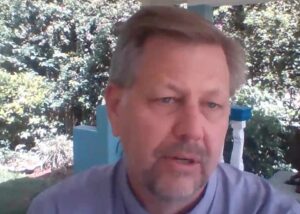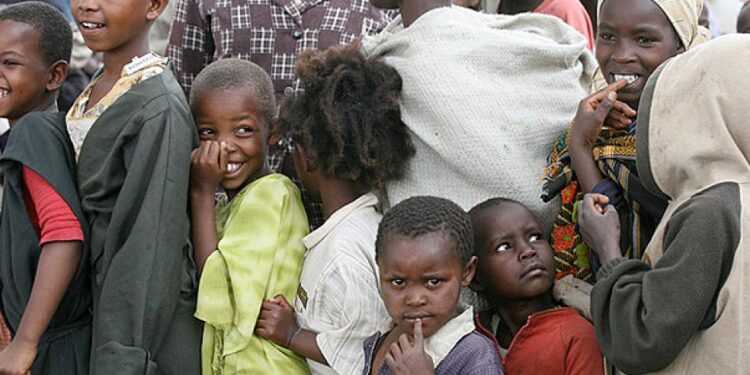
More than 14 years after Kenya suffered post-election violence that followed the December 2007 polls, and which brought several Kenyans before the International Criminal Court (ICC), the plight of the victims has once again come to the fore. This time round, the most invisible victims, those who suffered sexual and gender-based (SGBV) post-election violence (PEV) are being offered a reprieve in the proposed Trust Fund for Victims (TFV) assistance programme.
According to a notification filed before ICC’s Pre-Trial Chamber II, the TFV is in the process of setting up a project to provide physical and psychological rehabilitation, as well as material support to the Kenyan victims and their families.
In an exclusive interview, Scott Bartell, the Programme Manager at TFV, spoke to Janet Sankale of Journalists For Justice (JFJ) about the proposed programme.
JFJ: It has come as a surprise to many people in Kenya that the Trust Fund for Victims has expressed an interest in engaging and assisting survivors and victims of the country’s post-election violence of 2007/2008. Why is the TFV doing this so many years after the violence and the intervention of the ICC in the Kenya situation? It is quite a long time, compared to other cases, for example Uganda, where the fund has been operating since 2008.
Bartell: In the situation in Uganda, the assistance programme began in 2008 following the assessment of tender procedures that we began in 2007. The situation in Kenya is different because of the nature of the crimes and investigations. There were a number of trials already conducted in Kenya, which were dismissed without prejudice. The TFV board of directors made a decision that the fund should conduct an assessment in Kenya. The assessment covered the whole situation in terms of the range of injuries and categories of victims. Based on the findings, the board found that there are victims who still have injuries and need rehabilitation. Considering the availability of resources and the assessment, The TFV thought it would use its modest resources to address the injuries and needs of the SGBV survivors of PEV.
The Kenyan government and other organisations have done a lot to assist PEV victims, but the TFV findings indicated that the largest gap in service was in relation to SGBV survivors. Very little has been done to redress their injuries. We want to provide the necessary medical care, counselling services, and much-needed support to rehabilitate the injuries they suffered from PEV.
Q: Does the fund believe that the physical and psychological rehabilitation, as well as the material support it intends to offer, can benefit those still alive after all these years?
A: Yes, absolutely. It will benefit them. We are going to conduct an assistance programme which will rehabilitate existing, current, and persistent injuries. We are going to be engaged in rehabilitation activities to provide medical treatment to survivors who have current and continuing physical injuries, and also provide counselling, group counselling, or psychosocial support, or trauma counselling to individuals who are suffering from mental trauma attacks because of their experiences or what they witnessed during the PEV.
The rehabilitation will help the people who continue to suffer from persistent injuries. Those who will be part of the programme will benefit from medical treatment, surgery, and trauma counselling. The objective of the programme is to provide rehabilitation for injury and harm that the victims suffered.
Yes, it has taken years, but the assistance is rehabilitative and is still beneficial to the victims.
Q: Don’t you think that the psychological intervention will be more of a trigger of their trauma than support?
A: No. That is the whole point of counselling and working with properly trained counsellors. The psychiatrists and psychologists who will be working on the programme have experience working with victims of trauma. They will be able to diagnose particular conditions that a survivor may have. The whole point of rehabilitation is to help people cope with their trauma and provide a way to move forward.
Q: Why has the fund singled out survivors of sexual and gender-based violence? Does the TFV plan similar projects for the other victims and survivors of the post-election violence of that period?
A: According to our findings, the SGBV category was the most in need of assistance due to the fact that there was very little done for the victims and survivors over the intervening years. We decided to utilise our modest resources to address this gap and this category of victims. We do not have the financial resources and manpower to address all the various victims in all the different categories of violence. We thought it was best to target our resources to a particular category of victims that was in most need of help. Based on our assessment and depending on the resources available to the TFV, we had to narrow our focus to the SGBV category.
Other categories have received some attention, though not enough. We only have 300,000 euros for two years of programming in Kenya. We don’t have the resources to access all the other victims.
We also have a jurisdiction limit that the Government of Kenya does not have. It is always within the power of the government to provide a reparation programme.
Q: The project is to benefit victims in Nairobi, Nakuru, Meru, Western, and Mombasa. Why are some of the areas in the North Rift Valley region, which was the epicentre of the violence, not on the list? Why include Meru and Mombasa, yet they were relatively untouched by the violence? What criteria was used to pick these locations?
A: These are the areas where we found partners capable of rendering services. When we identify these partners we have to apply the tender procedures of the court, that is the ICC. In our scope of work, we indicated a number of areas, including the Rift Valley. However, we did not receive any response from interested organisations that were capable of delivering that service in that area. We had to evaluate the proposals that we received and select the strongest candidate and most capable organisation from the pool of applications. After evaluation, we were able to select a partner who had the capability and capacity. However, the organisation was not present in all the locations across the country that were traumatically affected by the PEV. We have to work with the applications we received.
Q: What are the timelines for the project? Can you name the non-governmental organisation that will be involved in the project?
A: It is a two-year programme and we hope to be able to address the needs of victims. We also hope to expand those services to other victims in other locations during the course of the programme.
We cannot name the organisation yet because we have not signed the contract. We are in the final stages of the tendering process and the rules and procedures do not allow us to communicate directly with the partners.
We also had to contact the pre-trial chamber to notify it of our intent to conduct specific assistance activity in the situation, and that it is currently under consideration. Once we receive a decision, we will be able to release the contacts of the organisation.
Q: What role has the government of Kenya played in this project? Has it been supportive and/or facilitative?
A: ICC observes the rule of complementarity and the TFV applies complementarity as well when evaluating the situation. If the needs of the victims in the situation are being addressed by the government or other entities, then there is no role for the TFV.
The assessment of the situation in Kenya indicated that there is a gap in service among the SGBV survivors. We are focusing on the SGBV programme because there is lack of redress for the physical and other harm suffered by the SGBV survivors. We will work with the implementing partners, which are non-governmental organisations or other service providers, to accomplish this.
In Uganda, we are working with local and international NGOs, faith-based organisations, academic and charity organisations, and whoever has the skill set to deliver a particular service. Anyone who has knowledge of the community and the operational capacity to administer those services to the victims is eligible to work with us.
In Kenya, we found partners who exhibited the requisite skills and knowledge of that particular victim community. They will be working with us for the next two years to try to rehabilitate as many victims and survivors of SGBV as possible.
Q: How is the trust prepared to implement this assistance programme?
A: We have partners on the ground working with us and also field officers to assist us in the day-to-day oversight of the programme. They will also engage with local authorities and local community leaders and government agencies in partnership with the partners on the ground.
Part of that effort will be conducting communication and outreach. If we go into a particular community, part of our activity is talking to local leaders, local authorities, to inform them about what we are doing, how we are doing it, where we are doing it, who is benefiting, and what services are being provided. It is part of public engagement and also includes working with victim associations. Many communities are like local associations of survivors who have gathered together not only as a peer support group but also trying to support one another in getting services from charities or other agencies. We are going to be working with them, inform them about what we are doing and how eligible victims may access rehabilitative services.
Q: Are you planning to do these activities sequentially or all at once?
A: We are going to revisit the activity plan with the partners. They had earlier shared their proposal. Once we issue them with the contract, we will update and revise the specific action plan. There will be a need for refinement of the activity plan previously proposed, which will determine if there is a need for certain sequences on the type of the activities or services.
Giving an example, we cannot put people into a livelihood programme if they are still dealing with serious mental trauma or physical injuries because they will not be able to concentrate on the livelihood activity. In many cases some mental health programmes need to come first so that people organise their minds and hearts to get coping mechanisms and to relieve the trauma.
Related articles:
https://jfjustice.net/hope-at-last-for-kenyan-victims-but-is-tfvs-planned-support-enough/
https://jfjustice.net/victims-fund-project-raises-questions-among-csos-in-kenya/







